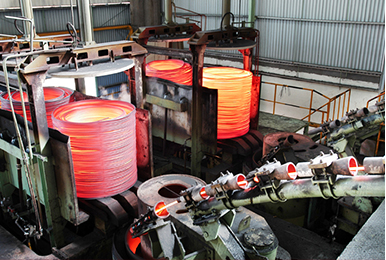Nov . 30, 2024 04:58 Back to list
Manufacturer of High-Quality Monolithic Refractory Materials for Various Industries
Monolithic Refractory Materials An Overview
Monolithic refractory materials are critical components in various high-temperature industrial processes. These materials offer outstanding durability and performance, making them indispensable in sectors such as metal production, glass manufacturing, cement production, and petrochemicals. As industries continue to evolve, the demand for innovative and efficient monolithic refractory solutions has risen sharply. This article delves into the characteristics, applications, manufacturing processes, and future trends of monolithic refractory materials.
Understanding Monolithic Refractory Materials
Monolithic refractories are non-brick, uniform materials that can be applied in monolithic form. Unlike traditional brick refractories that require interlocking, monolithic refractories are mixed and can be cast, gunned, or troweled directly into place. This flexibility allows for the seamless formation of linings in furnaces, kilns, and other high-temperature equipment, making them a popular choice in industries where space and installation ease are critical.
The key characteristics of these materials include high thermal stability, excellent resistance to thermal shock, and strong mechanical properties at elevated temperatures. They can withstand extreme conditions, including chemical corrosion, abrasion, and the severe temperature fluctuations often experienced in industrial processes.
Applications of Monolithic Refractory Materials
Monolithic refractories find applications in various sectors
1. Steel Industry Used in ladles, furnaces, and converters, monolithic refractories help in maintaining temperature and containing molten metal, providing essential thermal and chemical resistance.
2. Cement Manufacturing In the production of cement, monolithic refractories line preheaters, kilns, and coolers. Their durability ensures a long service life, reducing downtime and maintenance costs.
3. Glass Production These materials are critical for lining furnaces that melt raw glass materials. Their ability to withstand high temperatures without deforming makes them ideal for glass manufacturing environments.
4. Petrochemical Sector Monolithic refractories are used in reactors and distillation columns, where they resist not only high temperatures but also various chemical attacks.
monolithic refractory materials manufacturer

5. Waste Incineration In waste-to-energy plants, monolithic refractories play a crucial role in lining combustion chambers. They must resist corrosive gases while maintaining structural integrity under high thermal stress.
Manufacturing of Monolithic Refractory Materials
The production of monolithic refractories involves several steps. Raw materials such as alumina, silica, magnesia, and various bonding agents are carefully selected based on the intended application. The manufacturing process typically includes
1. Mixing The raw materials are mixed with additives and binders to create a homogeneous mixture. This step is crucial as it affects the final properties of the refractory.
2. Forming The mixture can be molded, cast, or extruded, depending on the application requirements. Techniques like gunning or shotcreting allow for the application of monolithic refractories on-site.
3. Drying and Curing After application, the material needs to be dried and cured to achieve the required strength. This step ensures the elimination of moisture and development of the desired physical properties.
4. Firing Some monolithic refractories undergo firing to enhance their properties. This process involves heating the material to high temperatures to create a bonding structure that improves mechanical strength and thermal stability.
Future Trends in Monolithic Refractory Materials
The monolithic refractory market is witnessing several trends influenced by technological advancements and evolving industry needs. One significant trend is the development of ultra-low cement and no-cement products. These innovations offer improved resistance to thermal shock and reduced porosity, enhancing performance and longevity.
Sustainability is also becoming a focal point. Manufacturers are exploring the use of recycled materials and environmentally friendly production processes to minimize the carbon footprint of monolithic refractories. Furthermore, the integration of advanced technologies such as artificial intelligence (AI) in manufacturing can optimize production processes and quality control.
In conclusion, monolithic refractory materials are vital to various high-temperature industries. Their unique properties, coupled with ongoing innovations in their manufacturing and application, position them as essential components for enhancing operational efficiency and sustainability. As industries continue to push the boundaries of temperature and material performance, the evolution of monolithic refractories will undoubtedly play a crucial role in meeting these challenges.
-
Eco-Friendly Granule Covering Agent | Dust & Caking Control
NewsAug.06,2025
-
Fe-C Composite Pellets for BOF: High-Efficiency & Cost-Saving
NewsAug.05,2025
-
Premium Tundish Covering Agents Exporters | High Purity
NewsAug.04,2025
-
Fe-C Composite Pellets for BOF | Efficient & Economical
NewsAug.03,2025
-
Top Tundish Covering Agent Exporters | Premium Quality Solutions
NewsAug.02,2025
-
First Bauxite Exporters | AI-Optimized Supply
NewsAug.01,2025
